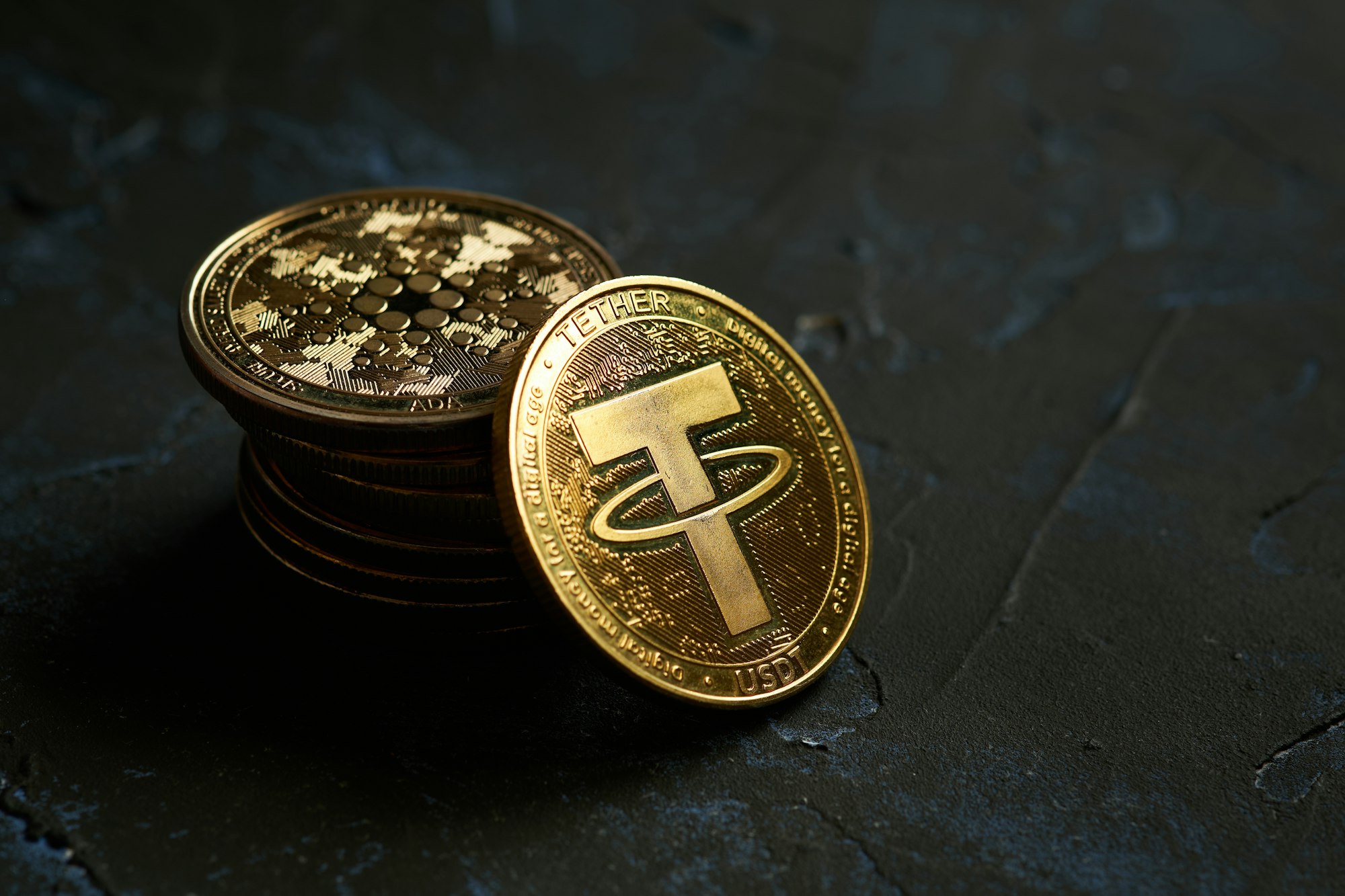Tether (USDT) has emerged as a significant player in the cryptocurrency market, often considered a cornerstone of digital asset trading. As a stablecoin, Tether is designed to maintain a stable value in relation to fiat currencies, particularly the U.S. dollar. This article will delve into the various facets of Tether, exploring how it operates, its current pricing dynamics, and its role in the broader cryptocurrency ecosystem.
What is Tether and How Does the Tether Token Work?
What is a Tether Token?
The Tether token, commonly referred to as USDT, is a type of cryptocurrency that is designed to be pegged to the U.S. dollar, making it a stablecoin. Unlike volatile cryptocurrencies such as Bitcoin, the value of Tether tokens is intended to remain constant, with each USDT token backed by reserves held by Tether Limited. These reserves primarily consist of fiat currencies, including USD, which allows USDT to maintain its peg to the dollar effectively. The concept behind Tether is to provide a reliable means of transacting within the cryptocurrency market, offering stability in an otherwise unpredictable environment.
How Does Tether Maintain its Peg to USD?
Tether maintains its peg to the U.S. dollar through a mechanism that ensures liquidity and trust in its reserves. For every USDT issued, Tether Limited claims to hold an equivalent amount of USD in reserve. This means that whenever Tether announces the issuance of new USDT tokens, they are backed by the corresponding amount of USD in their reserves. This system aims to provide confidence to users that they can exchange their USDT tokens for actual dollars whenever they choose. However, the effectiveness of this peg has drawn scrutiny and led to debates regarding the transparency of Tether’s reserve practices.
What Blockchain Does Tether Operate On?
Tether operates across multiple blockchains, allowing for greater flexibility and accessibility for users. Initially launched on the Bitcoin blockchain via the Omni Layer, Tether has since expanded its presence to other prominent blockchains, including Ethereum, Tron, and Binance Smart Chain. This multi-chain approach enables Tether to be used in various cryptocurrency exchanges and wallets, making it a versatile asset in the crypto ecosystem. By being available on different blockchains, Tether can cater to the diverse needs of users across the cryptocurrency market.
How to Buy Tether (USDT) and What to Consider?
Where Can I Buy Tether?
Purchasing Tether (USDT) is relatively straightforward, as it is listed on numerous cryptocurrency exchanges worldwide. Major exchanges such as Bitfinex, Binance, and Coinbase allow users to buy USDT using various fiat currencies or other cryptocurrencies. When deciding where to buy Tether, users should consider factors such as the exchange’s reputation, security measures, and the range of payment methods available. Additionally, choosing an exchange that offers low trading fees can enhance the overall buying experience.
What Exchanges Support USDT Transactions?
Numerous cryptocurrency exchanges support USDT transactions, facilitating its widespread use in trading. Bitfinex and Binance are among the most notable platforms where Tether is actively traded. Other exchanges, such as Kraken and Huobi, also provide access to USDT trading pairs. Each exchange may offer different features and benefits, such as advanced trading tools or unique trading pairs, so it is essential for users to research and select an exchange that aligns with their trading preferences and needs.
What Payment Methods Can Be Used to Buy Tether?
When looking to buy Tether, users have several payment methods at their disposal. Most exchanges allow the purchase of USDT using traditional fiat currencies via bank transfers or credit/debit cards. Some platforms also accept alternative payment methods, such as PayPal or digital wallets. Additionally, users can buy Tether using other cryptocurrencies, enhancing the flexibility of acquiring USDT. Understanding the available payment options is crucial for users seeking to enter the cryptocurrency market efficiently.
What is the Current Tether Price and Price Chart Analysis?
How to Track the Tether Price?
Tracking the price of Tether (USDT) is essential for users engaged in cryptocurrency trading. Various platforms provide real-time data on the current Tether price, including cryptocurrency exchanges and financial news websites. Users can monitor the live price of USDT to make informed trading decisions. Additionally, many cryptocurrency tracking tools and mobile apps allow for personalized alerts, ensuring that traders remain updated on price movements.
What Influences the USDT Price?
While Tether aims to maintain a stable value pegged to the U.S. dollar, several factors can influence the USDT price. Market demand and supply dynamics play a pivotal role; when demand for USDT increases, its price may experience slight fluctuations. Furthermore, broader market trends, such as changes in the price of Bitcoin or other cryptocurrencies, can indirectly impact Tether’s price. Regulatory developments and news surrounding Tether Limited’s operations may also affect market perception and, consequently, the price of Tether.
Where Can I Find Historical Tether Price Charts?
Historical Tether price charts can be accessed through various financial platforms and cryptocurrency tracking websites. These charts provide valuable insights into Tether’s price movements over time, helping users analyze trends and make informed trading decisions. Websites like CoinMarketCap and CoinGecko offer comprehensive historical data on USDT, allowing users to view price changes, trading volumes, and other essential metrics that can aid in understanding the performance of Tether in the cryptocurrency market.
Understanding Tether’s Transparency and Reserve Practices
What Reserves Back Tether (USDT)?
The reserves backing Tether (USDT) have been a subject of scrutiny and debate within the cryptocurrency community. According to Tether Limited, every USDT token is backed by an equivalent amount of USD or other fiat currencies in reserve. This means that for Tether to maintain its peg, it must hold sufficient reserves to cover the total amount of USDT tokens in circulation. However, there have been calls for greater transparency regarding the specific assets in Tether’s reserves, prompting Tether Limited to publish periodic reports detailing their holdings.
How Transparent is Tether Limited?
Tether Limited has made efforts to increase transparency regarding its operations and reserves. The company publishes transparency reports that outline the amount of Tether in circulation and the corresponding reserves. However, critics argue that these reports lack comprehensive detail, leaving room for skepticism about the actual backing of USDT. The lack of third-party audits has also raised concerns about the accuracy of Tether’s claims. As the cryptocurrency market evolves, the demand for transparency in Tether’s practices continues to grow.
What Regulatory Challenges has Tether Faced?
Tether has encountered several regulatory challenges since its inception. Various authorities have scrutinized the company’s reserve practices and overall operations, leading to investigations and legal inquiries. The CEO of Tether has publicly addressed these concerns, emphasizing the company’s commitment to compliance and transparency. Nevertheless, the regulatory landscape surrounding Tether remains complex, and the company must navigate ongoing scrutiny to maintain its position in the cryptocurrency market.
How is Tether Used in Cryptocurrency Trading?
Why Do Traders Prefer Using Tether in Crypto Exchanges?
Traders often prefer using Tether (USDT) in cryptocurrency exchanges for several reasons. One of the primary advantages of USDT is its stability, as it is pegged to the U.S. dollar. This stability allows traders to hedge against the volatility typically associated with other cryptocurrencies, such as Bitcoin. Additionally, USDT provides a convenient means of transferring value between different cryptocurrency exchanges without the need to convert back to fiat currencies, streamlining the trading process significantly.
How Does Tether Facilitate Trading Between Different Cryptocurrencies?
Tether plays a crucial role in facilitating trading between different cryptocurrencies. As a widely accepted stablecoin, USDT acts as an intermediary, allowing traders to easily swap between various digital assets without the need for fiat conversion. For example, a trader can sell Bitcoin for USDT and then use that USDT to purchase Ethereum. This process reduces transaction costs and time while providing traders with the flexibility to navigate the cryptocurrency market more effectively.
What Role Does Tether Play in the Cryptocurrency Market Cap?
Tether’s presence in the cryptocurrency market significantly influences the overall market cap. As one of the largest stablecoins by market capitalization, USDT serves as a critical liquidity source for traders and investors. The amount of USDT in circulation directly affects market dynamics, as it is often used as a benchmark for measuring the health of the cryptocurrency market. Tether’s market cap can indicate the level of investor confidence and activity in the crypto space, making it a vital component of the broader cryptocurrency ecosystem.






